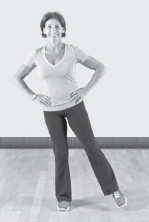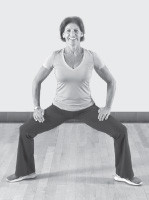Build your core muscles for a healthier, more active future
Many exercise programs these days spotlight the ever-present abs (abdominal muscles) but pay little attention to the other muscles that form the body’s core. Yet building up all of your core muscles is essential for staying strong and flexible and improving performance in almost any sport. It’s also vital for sidestepping debilitating back pain.
Your core includes your back, side, pelvic, and buttock muscles, as well as the abdominal muscles. The core forms a sturdy central link between your upper and lower body. Much like the trunk of a tree, core muscles need to be strong yet flexible. A weak or inflexible core drains power from many movements and can make it downright difficult to do some.
Benefits of a stronger core
No matter where motion starts, it ripples upward and downward through the core. That means a strong, flexible core underpins almost everything you do.
Everyday acts. Bending to put on shoes or pick up a package, turning to look behind you, sitting in a chair, or simply standing still are just a few of the many mundane actions that rely on your core. Even basic activities of daily living, like bathing or dressing, call on core muscles.
On-the-job tasks. Jobs that involve lifting, twisting, and standing all rely on core muscles. But less obvious tasks — like sitting at your desk for hours — engage your core, too. Phone calls, typing, computer use, and similar work can make back muscles surprisingly stiff and sore, particularly if you’re not strong enough to practice good posture and aren’t taking breaks when needed.
A healthy back. Low back pain can be prevented by exercises that promote well-balanced, resilient core muscles. When back pain strikes, a regimen of core exercises is often prescribed to relieve it, coupled with medications, physical therapy, or other treatments if necessary.
Sports and other activities. Biking, running, swimming, golf, tennis or other racquet sports, baseball, volleyball, kayaking, rowing, and many other athletic activities are powered by a strong core. Sexual activity also calls for core power and flexibility.
Housework, fix-it work, and gardening. Bending, lifting, twisting, carrying, hammering, reaching overhead — even vacuuming, mopping, and dusting spring from, or pass through, the core.
Balance and stability. Your core stabilizes your body, allowing you to move in any direction, even on the bumpiest terrain — or stand in one spot without losing your balance. Viewed this way, core exercises can lessen your risk of falling.
Good posture. Good posture trims your silhouette, projects confidence, lessens wear and tear on the spine, and allows you to breathe deeply. By contributing to slouching, weak core muscles undermine these benefits.
Weak, tight, or unbalanced core muscles can undermine you in any of these realms. So while it’s important to build a strong core, it’s unwise to aim all your efforts at developing rippling abs. Overtraining abdominal muscles while snubbing muscles of the back and hip can set you up for injuries and cut athletic prowess.
Core exercise examples
In Core Exercises, a Harvard Medical School Special Health Report that I helped develop, we worked with personal trainers to develop a series of exercises to strengthen core muscles. Writer Annmarie Dadoly wrote about the right and wrong ways to do three core-building exercises: lunges, squats, and planks.
Here are four of the nine exercises from the Vertical Standing Core Workout, one of the six complete workouts detailed in the report.
Side leg liftReps: 10 per leg Starting position: Stand up straight with your feet together and your hands on your hips. Movement: Exhale as you lift your left leg straight out to the side until your foot is about six inches off the floor, then return to the starting position. Keep your hips evenly aligned throughout. Finish all reps, then repeat with the right leg. Tips and techniques:
|
Knee liftReps: 10 per leg Starting position: Stand up straight with your feet together. Put your hands out to the sides, elbows slightly bent. Movement: Lift your right knee toward the ceiling as high as is comfortable, then lower the foot to the floor. Finish all reps, then repeat with the left leg. Tips and techniques:
|
Alternating reverse lungesReps: 10 Starting position: Stand up straight with your feet together and your hands at your sides. Movement: Step back on the ball of your right foot and sink into a lunge, bending your knees and bringing your hands up in front of your chest, elbows bent. Your left knee should align over your left ankle, and your right knee should point to the floor. Exhale as you return to the starting position. Repeat with your left leg. This is one rep. Continue to alternate legs as you finish all reps. Tips and techniques:
|
PliéReps: 10 Starting position: Stand up straight with your feet wider than your hips. Turn your toes slightly outward (rotating from the hips) and rest your hands on your thighs. Movement: Keep your back straight as you bend your knees and lower your buttocks toward the floor. Stop before your buttocks reach knee level. Exhale as you return to the starting position. Tips and techniques:
|
About the Author

Edward Phillips, MD, Contributor
Disclaimer:
As a service to our readers, Harvard Health Publishing provides access to our library of archived content. Please note the date of last review or update on all articles.
No content on this site, regardless of date, should ever be used as a substitute for direct medical advice from your doctor or other qualified clinician.



















